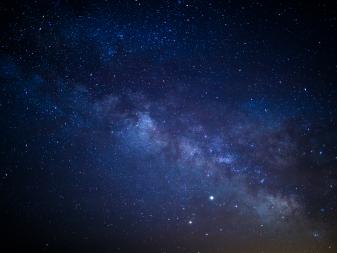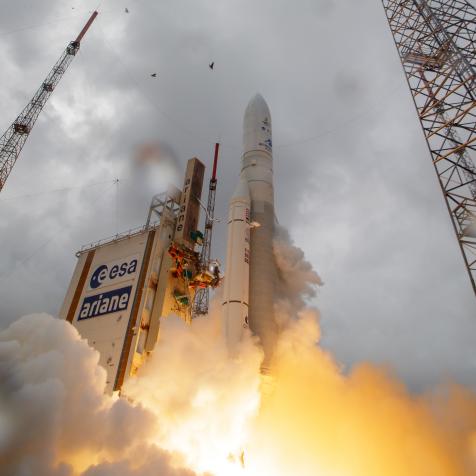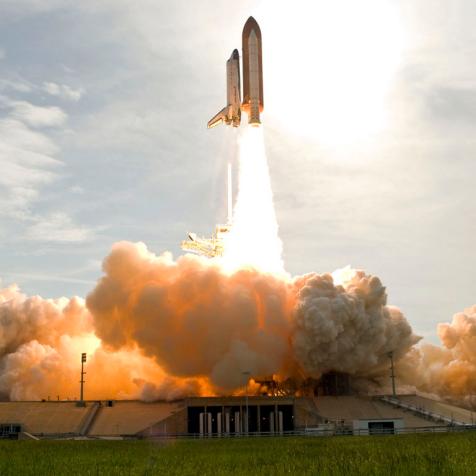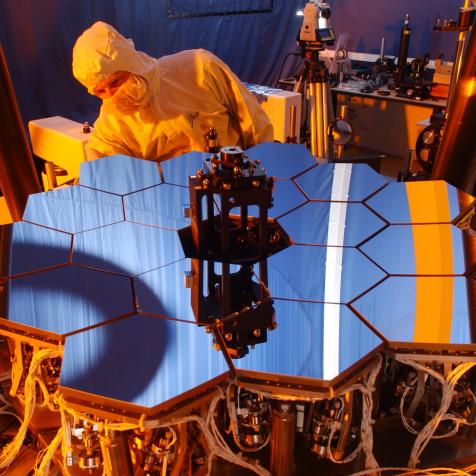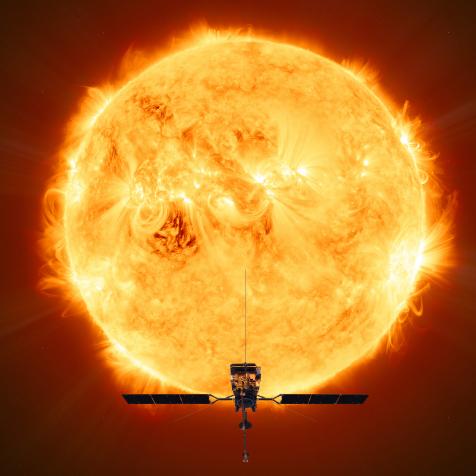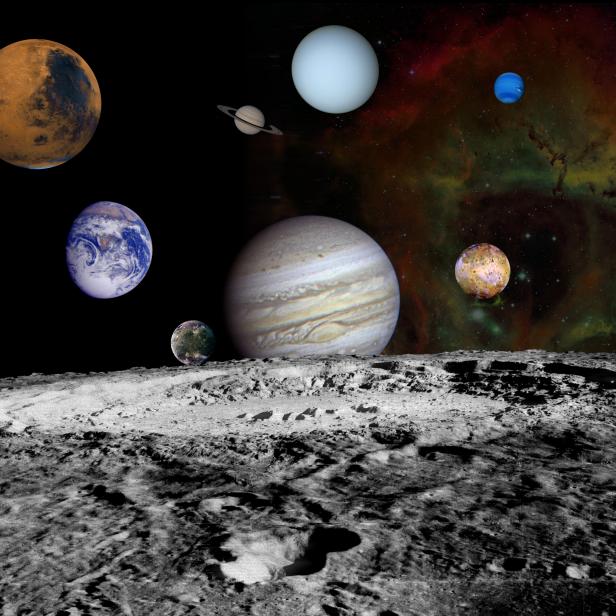
NASA
It’s Not You, It’s Me: How a Planet Left Our Solar System

Sometimes you just know. Something clicks, you have a realization that this relationship isn’t right, and it’s simply time to go.
It can happen to anyone, at any time, even to planets, and even billions of years ago.
The solar system we have today isn’t the solar system we’ve had the whole time. Today, we have four rocky inner worlds (Mercury, Venus, Earth, and Mars), an asteroid belt, four gassy outer worlds (Jupiter, Saturn, Uranus, and Neptune), and then a ring of icy leftovers.
When astronomers use mathematical models to simulate the formation of our solar system, they find something interesting: the outer planets were once much, much farther away from the Sun. That’s because our Sun is so dang hot; its intense heat melts any ices and blows away any loose gasses in the inner regions of the solar system.
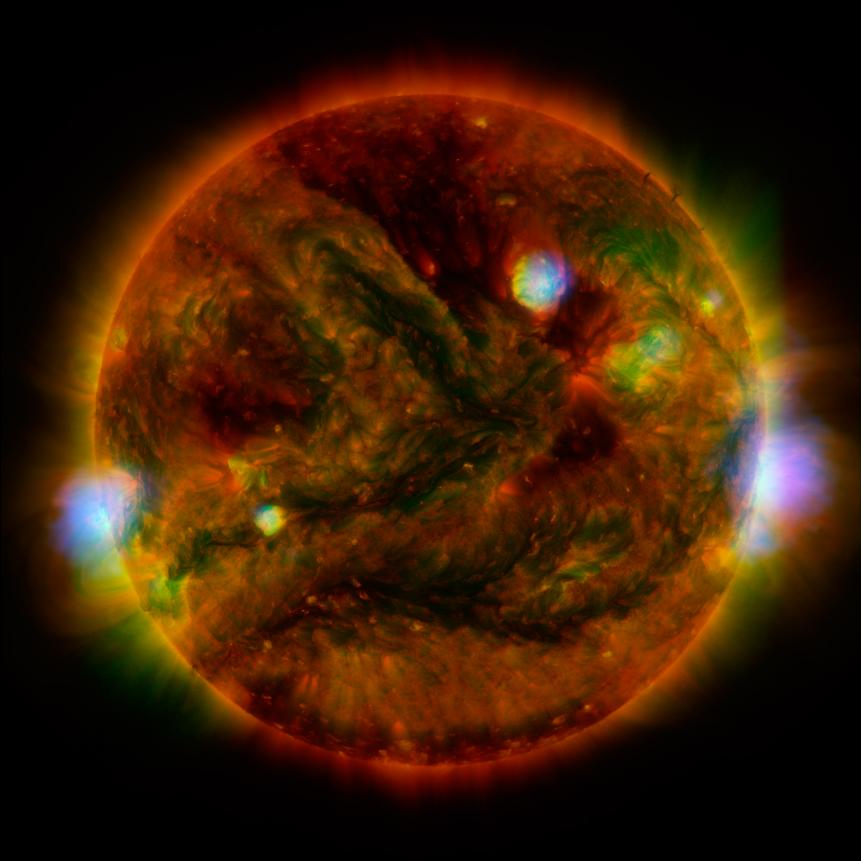
NASA/JPL-Caltech/GSFC/JAXA
Flaring, active regions of our Sun are highlighted in this image combining observations from Nuclear Spectroscopic Telescope Array, or NuSTAR (shown in blue); low-energy X-rays from Japan's Hinode spacecraft are green; and extreme ultraviolet light from Solar Dynamics Observatory, or SDO, are yellow and red.
If you’re trying to build a giant planet, you need lots and lots of ices and gasses, like hydrogen and helium. And there just isn’t that much of the stuff near the Sun, especially in its early days when it was much more temperamental than it is today.
So the giant planets need to form further out, where there’s a rich supply of materials that they can use to bulk up and get huge.
Now we have an interesting problem: how do the giant planets then migrate into their current positions?
One option is through a complicated dance involving the still-forming planets and the rich supplies of gas surrounding them in the young system. Through various interactions, the gas can slowly tug at the planets, pulling them closer to the Sun over the course of a few million years.
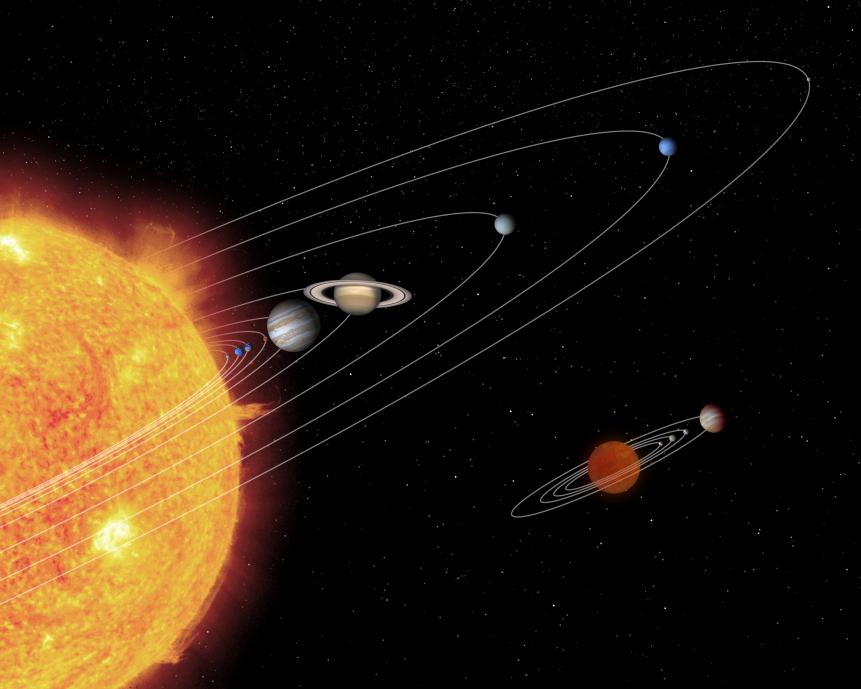
NASA/JPL-Caltech/T. Pyle (SSC)
This artist's conception shows the relative size of a hypothetical brown dwarf-planetary system compared to our own solar system.
Another, much more fun, possibility involves a fifth giant planet.
At first, this world would form just like its siblings, suckling on tremendous reserves of gas, plumping up to become a giant in its own right. But there isn’t enough room in the outer system for that many planets. They would tend to swing close together or have their orbits align too many times.
Eventually, after a hundred thousand years or so, things would go haywire. The planet would become unstable, its orbit varying radically. Eventually, it would get ejected out of the solar system altogether.
As for the remaining planets? Well, heaving a giant world out of the solar system requires a fair amount of energy, and somebody has to pay the price. The remaining planets, losing energy, would be forced to migrate closer to the Sun into their present-day positions.
But what about the fifth planet? It would be forced to roam the interstellar depths as a rogue planet for the rest of the days. It would be alone…but at least it would be free.
Dive Deeper into the Cosmos
Journey Through the Cosmos in an All-New Season of How the Universe Works
The new season premieres on Science Channel and streams on discovery+.









